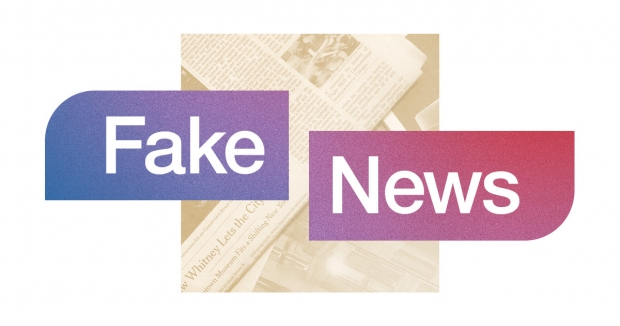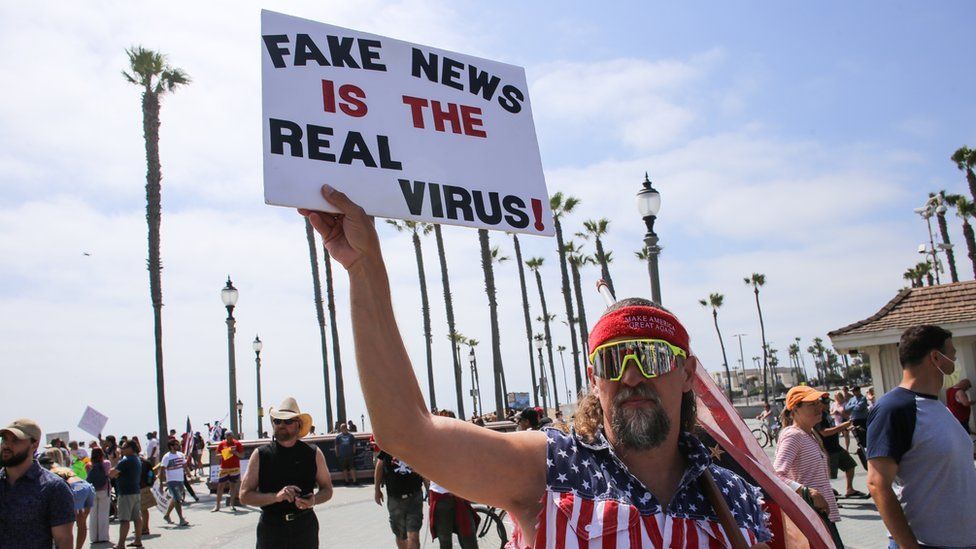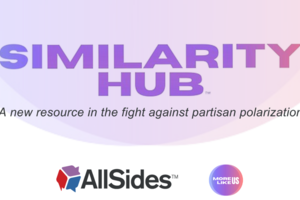What is Fake News?

We’ve all heard the term “fake news.” But what actually qualifies?
There is broad disagreement about what deserves to be called “fake news.” The term was broadly used during former President Donald Trump’s tenure in office, and became part of the mainstream discourse when he famously told a CNN reporter, “You're fake news” in 2017.
“Fake news” typically refers to purely false or made up information presented as news.
However, some use a broader definition of “fake news” to describe information or media coverage that may include some factual information mixed with false information or opinions stated as fact, or is overly biased, deceptive, or manipulative. In this view, overly misleading news amounts to “fake news.”
Related: Left-Right Translation of “Fake News”
In this view, established media powers that are misrepresenting facts, failing to do good-faith research, focusing on the wrong things, pushing false narratives, and/or lacking credibility — all amounting to “fake news.”
People from all sides of the political spectrum — left and right —have noted that the term “fake news” can be used to discredit anyone or anything someone disagrees with or doesn’t like.
It can be just as misleading to discredit something that is otherwise true by calling it “fake news.”
Many who lean left felt that President Trump falsely charged groups of promoting fake news. To them, it was just how Trump handled any fact, charge or opinion he didn’t agree with or like.
Many on the right point to how the media falsely promoted the idea that the Hunter Biden laptop with potential evidence of criminal acts was really a Russian plot and called charges that the COVID-19 virus could have come from the Wuhan lab a false conspiracy theory, and even got social media to censor both claims. Not until after the election did they reverse themselves.
It has also become popular for media companies, especially for profit ones, to do exposės of their competition describing how those other media organizations are false or untrustworthy. It is interesting to note that none of these organizations ever include a disclaimer describing that they have financial incentives to discredit their competitors.

The phrase “fake news” may be used to describe something that’s accidental, intentional, or something in between. An entire news outlet isn’t necessarily “fake news” because it posted one incorrect or false story. Mistakes do happen, and often, journalists who make an oversight or accidentally publish false information apologize, retract, and try to rectify the situation.
While “fake news” was a term employed a lot during President Donald Trump’s tenure in the White House, today, many have begun to more often refer to “misinformation” — false information or misleading narratives. This term is perhaps more prominently used by left politicians and left media outlets, including CNN, MSNBC, and The New York Times.
At its core, fake news can be defined like this:
Fake News — noun: False news stories that appear to be real, typically used to advance political agendas, stoke confusion among the public, or to joke and satirize. Also used facetiously to dismiss or discredit information and viewpoints that one doesn’t agree with, or to refer to overly biased or misleading news that may contain some truth, but is distorted, omits other information, or focused on only specific elements of the story in order to suit a certain political agenda.
Different dictionaries, textbooks and research guides have different definitions of fake news.
The Cambridge Dictionary defines fake news as “false stories that appear to be news, spread on the internet or using other media, usually created to influence political views or as a joke.”
Dictionary.com offers several definitions:

Some of the disagreement around the term “fake news” stems from the fact that people use it to mean different things.
The term “fake news” is used in many different contexts across the political spectrum, and can refer to any of the following:
This could be thought of as the “technical definition” of fake news: completely untrue, false, or made up information. It is often presented in order to persuade, manipulate or influence people.
Examples: During the 2016 U.S. presidential election, the false story, “Pope Francis shocks world, endorses Donald Trump for president” was published by a site called WTOE 5 News. The story was engaged with on Facebook nearly a million times. WTOE 5 has since been shut down, but had a disclaimer on its homepage reading, “most articles on wt0e5news.com are satire or pure fantasy.” Some might say this didn’t start out as fake news because it was obviously written to be satire, but it became fake news when it was spread as actual news.
On Sept. 3, 2021, during the COVID-19 pandemic, Rolling Stone (Left bias) published an article (which was later updated with a correction) quoting an ER doctor who claimed gunshot victims were being turned away from several Oklahoma hospitals because emergency rooms were overwhelmed with patients who had overdosed on ivermectin, an antiparasitic agent that was approved by the FDA for some uses, but not to treat COVID-19.
The doctor’s claim turned out to be false: Northeastern Health System - Sequoyah issued its own statement saying that the doctor “is not an employee of NHS Sequoyah” and hadn’t worked at that hospital in over two months, nor had they treated any patients for ivermectin overdoses.
This form of fake news occurs when true information is misrepresented, misused or misapplied in order to paint a false picture of reality.
Example: In May 2018, some progressive activists, journalists, and former Obama speechwriter Jon Favreau criticized the Trump administration’s treatment of unaccompanied children at the U.S. border with Mexico by tweeting a photo showing immigrant children sleeping in an enclosure surrounded by a chain link fence, along with an AZCentral.com (Center bias) article titled, “First glimpse of immigrant children at holding facility.” But the article and photo were from 2014 — during Obama’s presidency. The photo itself was real, but was misapplied in a different context in order to paint a false picture of Trump-era policies, resulting in fake news.
This form of fake news occurs when the media provides information/data that is factually true, but either misrepresents the information or ignores other information or data that would counter its narrative.
Example: In an op-ed, Ken Stern, former president of NPR, wrote that the media often ignores data to support gun rights, focusing only on data that supports stricter gun control. He wrote “legitimate defensive gun use (DGU) … is often dismissed by the media as myth” even though they “happen all the time — 200 times a day, according to the Department of Justice, or 5,000 times a day, according to an overly exuberant Florida State University study.” Stern said the media did not cover an incident of a Houston store clerk who used his gun to wound a would-be robber who was brandishing his own gun. Stern found a video showing the incident on Reddit. In this case, news that pushes the need for stricter gun control while ignoring arguments for gun rights could be seen as fake news.
This type of fake news refers to media outlets that cover stories that don’t deserve to be news, or outlets that ignore stories that should be big news.
Example: In January 2019, Media Matters for America (Left bias) said Fox News’ (Right bias) top three prime-time shows and its flagship morning program, Fox & Friends, ignored a report that President Donald Trump “sat down with Vladimir Putin for several minutes of conversation at the end of an evening event at the G20 summit in Buenos Aires in November, with no translator or note-taker from the US side to record the dialogue.” Media Matters said left-biased sources MSNBC (Left bias) and CNN (Left bias) “both spent significant time discussing the report.” Therefore, some may characterize Fox & Friends' focus on other stories as "fake news."
This form of fake news is perhaps the most hotly contested. It refers to instances when media outlets shape and spread information in a way that supports a certain political narrative.
Examples: In Sept. 2021, NPR (Lean Left bias) tweeted that podcaster Joe Rogan, who had COVID-19, used a “cocktail of unproven treatments — including ivermectin, a deworming drug for cows that the FDA warns people should not ingest” to treat the illness. USA Today (Lean Left bias) ran a similar headline, “Joe Rogan announces he has COVID and took the horse de-wormer Ivermectin.” Some accused the outlets of fake news for framing ivermectin as a horse dewormer when it has been approved and widely used to treat parasitic diseases in humans (though it was not approved to treat COVID-19).
In the months after the 2020 election, Fox News, Epoch Times (Lean Right bias) and many other sources on the right reported frequently and prominently on claims that voter fraud helped Biden beat Trump, and on audits of voting machines and state election operations that sought to uncover evidence of fraud. Some discrepancies were found, but many Republicans and Democrats alike agree that there has never been evidence of election fraud significant enough to sway the vote in Biden’s favor.
In 2021, there were many claims that the media spread fake news as false narratives during the trial of teenager Kyle Rittenhouse, who was charged but found not guilty of killing two people and injuring a third during Black Lives Matter protests/riots in Kenosha, Wisconsin. Some media outlets, such as The Independent and outlets in Brazil, reported that Rittenhouse had killed two black people, which was untrue; other outlets drew criticism for omitting details about the case or misrepresenting the facts to frame him as guilty. Rittenhouse eventually launched a plan to sue media outlets for spreading false narratives about him.
Fake news can be hard to spot, but typically is revealed by reviewing information from diverse sources, reading multiple perspectives, and independently confirming details, rather than relying on what one source or one side of the political spectrum says. AllSides helps you to do this by offering a balanced news feed that shows headlines side-by-side from media outlets on the left, center, and right.
When news sources across the spectrum are reporting on subjects with uneven amounts of focus — or covering different subjects altogether — it’s harder to know what’s true or false, or to separate clickbait from legitimately important stories. That’s why consuming news from a diverse array of sources is crucial.
Avoid fake news by using the AllSides balanced newsfeed, either on our website or mobile app, and use the AllSides Media Bias Chart™ to identify where news sources fall on the political spectrum.
Henry A. Brechter is the Managing Editor of AllSides. He has a Center bias.
This piece was reviewed by Director of Marketing Julie Mastrine (Lean Right bias), News Editor Joseph Ratliff (Lean Left bias), Weekend Editor Antonio Ferme (Center bias) and CEO John Gable (Lean Right bias).

April 25th, 2024

April 25th, 2024


April 24th, 2024